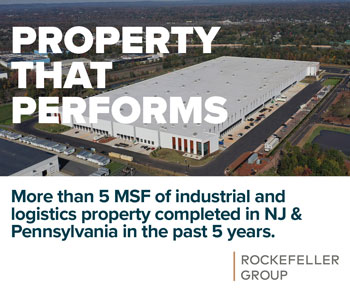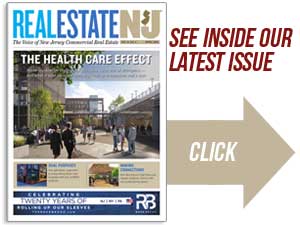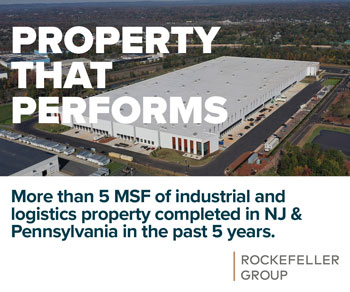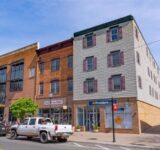By Michael G. McGuinness

Commercial real estate developers and their professionals are a tough breed of entrepreneurs who thrive on thinking outside the box. My recent observation of presentations to the judges for NAIOP’s Deal of the Year awards (to be announced at the May 16 Gala), confirmed the latent creativity and tireless work ethic in this business — a business that is, in reality, all about hospitality and human resources as developers and brokers focus on creating amenity-rich spaces to compete for tenants and the modern workforce. Like the Disney model, it’s about incredible customer service, unique experiences and clean environments. The most successful CRE professionals are trusted communicators who take time to understand a client’s concerns and challenges, offer a vision to meet their needs, understand the math and know how to close a deal. They are developing exciting projects that are transforming New Jersey towns. Despite our state’s irrational tax structure, high cost of living, antiquated infrastructure and congestion, we are blessed with a trifecta of sweet spots: the urban revival, suburban makeovers and a continuing industrial boom.
Starting with our urban centers, many cities and small towns with easy access to major transportation modes are experiencing a renaissance with the infusion of private capital, infrastructure investment, the development of workforce housing and the expansion of arts and cultural districts. This trend is proof that both the younger and older demographics are looking for convenient access to live, work, play and shop environments that offer connections to vibrant and diverse communities. At the top of the list is Newark, whose rebirth is being greatly aided by its 26-mile-long network of 10-gig-capacity fiber unlike any other in the nation (outside Palo Alto and parts of Boston and Chattanooga). In one of the more well-known deals last year, Mars Wrigley Confectionery decided to return to Newark (where it originally produced M&Ms candies for military rations) and lease office space that will bring in over 500 employees, some from as far away as Chicago. For businesses and residents priced out of Manhattan and the outer boroughs, there are plenty of more affordable options in the older towns of Bergen, Hudson, Essex and Union counties. Their revival, however, will depend on strong local support, easier access to affordable liquor licenses and a rational process for the cleanup of contaminated sites.
New Jersey has long been a leader in the global health care marketplace, and that is still the case as we move out into the older and newer rings of the suburban office market. There is considerable interest in high-end suburban space, evidenced by many transactions among firms in the life science, pharma and research and development sector, including Teva Pharmaceuticals in Parsippany, Integra Life Sciences in Princeton and Quest Diagnostics in Clifton. The growth and long-term commitments of these leading firms validate the enduring strength of our life sciences industry and New Jersey’s value proposition to these international companies. The Grow NJ tax credit incentive program played a key role in each of their decisions, since it helped to level the playing field to compensate for our state’s irrational tax structure. Unlike a subsidy, Grow tax credits function much like rebates for firms that make long-term investments that generate a net increase of revenue for the region. While New Jersey’s educated and skilled workforce played a crucial role in these location decisions, the incentives likely outweighed the other plusses. Even so, it is still very difficult to gain traction in converting stranded, vacant suburban office and retail space into mixed-use developments with residential components. The success stories are as impressive as they are rare: the Center of Excellence at Bridgewater, Bell Works in Holmdel and, in the near future, the District at 1515 in Parsippany.
The third sweet spot is the industrial sector, which is being fueled by the e-commerce explosion that has solidified New Jersey’s #2 position in North America as a distribution hub for transportation and logistics operations. This sector certainly profited from increased demand by the tens of millions of consumers in the eastern half of the continent, as the Port of New York and New Jersey set another record for container volume last year. There is no better antidote than the success of this roaring market for the cleanup of thousands of acres of contaminated sites and their conversion to clean ratables and job centers. Some of these sites were home to large employers in the 19th and early 20th centuries, and many of the jobs were 3-D (dirty, dangerous and deadly). Today, they house clean, safe jobs in the e-commerce, last-mile, food preparation, cold storage and related industries. Rail capacity and easy access to roadways and navigable waters enhance the desirability of these sites.
Each of the three sweet spots faces unique challenges: a glut of vacant space in the suburbs; a shortage of land for industrial uses; and the huge costs typically associated with urban development — such as infrastructure investment, demolition, environmental cleanup, parking. This is on top of the taxes, the high cost of living and the not-so-easy task of finding right-skilled workers. Savvy firms looking to expand or retain operations here rely heavily on data analytics to inform location decisions. For all these reasons, it is essential that New Jersey gets its incentives programs right. Fortunately, New Jersey’s CRE professionals are very adept at turning lemons into lemonade. Their forward-thinking and upbeat attitude, strong work ethic and commitment to the Garden State are inspiring and contagious. The more I learn from them, the more confident I am that New Jersey has a prosperous future.
Michael McGuinness is CEO of NAIOP New Jersey and has led the commercial real estate development association since 1997. NAIOP represents developers, owners, asset managers and investors of commercial, industrial and mixed-use properties, with 830 members in New Jersey and over 19,000 members throughout North America.










